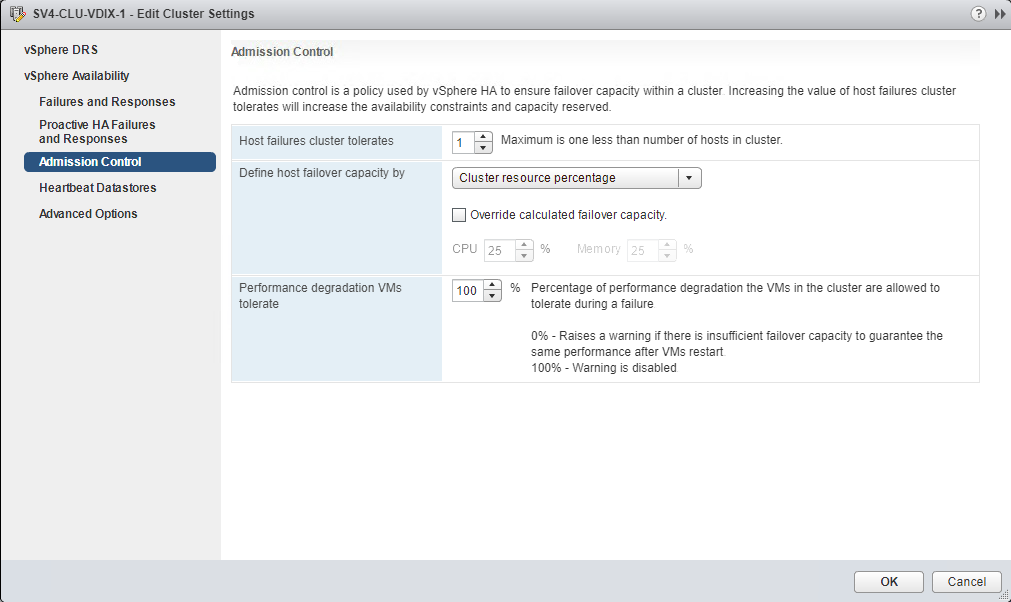VMware HA Admission Control ensures that enough physical resources are available to meet the CPU and memory reservation requirements needed to restart the virtual machines on surviving hosts, in case there is a host failure:

When HA Admission Control is enabled, virtual machines cannot be powered on if there are insufficient resources to meet the reservation requirements for the virtual machines that are protected in the HA cluster. The resource requirements are calculated based on the HA Admission Control policy that's selected.
In vSphere 6.7, there are three HA admission control policies:
- Define failover capacity by static number of hosts
- Define failover capacity by reserving a percentage of the cluster resources
- Use dedicated failover hosts
The Define failover capacity by static number of hosts policy (for vSphere client: Host failures cluster tolerates) reserves failover resources based on the slot size. The slot size is determined by the largest CPU and memory reservation for a virtual machine that has been powered on. The number of slots available in the cluster and the number of slots to be reserved based on the failover capacity selection are calculated by HA.
A single virtual machine with a large memory or CPU reservation will have an impact on the number of slots available. The value of Fixed slot size, which can be configured using the vSphere Web Client, defines the amount of CPU and memory resources that make up a slot. In the versions of vSphere prior to 5.1, the slot size could be configured with the vSphere Client by setting the HA advanced options as das.slotCPUInMHz for CPU resources and as das.slotMeminMB for memory resources.
Using the Define failover capacity by reserving a percentage of the cluster resources policy (for vSphere Client: Percentage of cluster resources reserved as failover spare capacity) allows for a percentage of the memory and CPU resources to be reserved to accommodate a host failure. This reservation is distributed across all hosts in the cluster. To guarantee resource availability in the event of a host failure, the percentage should be set to reserve the CPU and memory resources equal to a single host in a cluster; for example, for a five-host cluster, 20 percent of cluster resources should be reserved. This will guarantee that enough resources are available to support a single host failure.
The Use dedicated failover hosts policy (for vSphere Client: Specify failover hosts) reserves a configured host to be available for failover. The hosts that are specified as failover hosts will not provide resources to virtual machines during normal operations. The host is a hot spare, and virtual machines will only be started on the hosts.
If HA Admission Control is disabled, virtual machines can be powered on, even if there are not enough resources available to ensure failover capacity. If the surviving hosts are not able to provide the resources with the necessary reservations to start the virtual machines, the virtual machines will not be restarted when a host fails.
